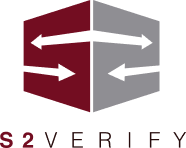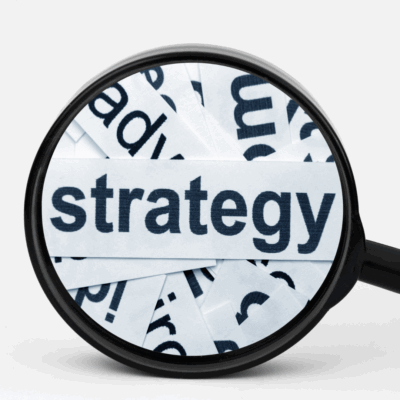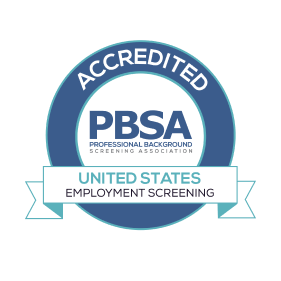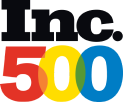Using HR Strategy to Align People Data with Business Goals
At a time when HR is expected to do more than ever, the role has expanded far beyond policies, payroll, and compliance. Today, HR strategy is about culture, data, and empathy, or as Alex Genetti, Vice President of People and Places at Enable, puts it, “knowing what to measure and how to explain it in a way your COO understands.”
Through Enable’s rapid global growth and cultural transformation, Genetti has leaned into transparency, data-driven strategy, and employee empowerment. Her insights shared on this week’s episode of America Back to Work offer a glimpse into Enable’s people philosophy and an HR strategy for any team aiming to scale impact with integrity.
Navigating the New World of Work
The pandemic didn’t just upend how we work. It reshaped what employees expect from their employers.
“We got used to throwing in a load of laundry during lunch,” Genetti says. “Now, we have to figure out how to meet people where they are without compromising business outcomes.”
Enable has adopted a hybrid model, with certain roles remote and others in-office. This dual structure challenges HR teams to bridge cultural and operational gaps. From compensation to communication, the hybrid divide requires constant calibration. Genetti’s advice? Be intentional and data-driven in designing flexible frameworks that work for everyone, not just the loudest voices in the room.
Proving the Value of HR Strategy
If HR wants a seat at the table, it must bring metrics. Genetti emphasizes that data is non-negotiable.
“Attrition, onboarding velocity, eNPS, if you can’t explain these in financial terms, you won’t be taken seriously,” she says.
She goes beyond vanity metrics. Enable looks at onboarding velocity (how quickly a new hire adds value), graded attrition (who’s leaving and whether it’s regrettable), and employee net promoter scores. These insights allow HR to forecast risk, advocate for investment, and build credibility as a strategic partner.
Designing Onboarding for Impact
Enable’s onboarding experience, Enable U, has a single goal: “Make sure we’ve done absolutely everything to enable someone to succeed.”
This includes tailored learning journeys tailored to each role, ranging from sales certifications to engineering ramp-ups.
Crucially, onboarding is not just administrative. It’s Enable’s first shot at embedding culture. Regardless of location or level, every employee meets the CEO, completes DEI training, and connects with cross-functional peers.
“It has to be tight,” Genetti says. “No excuses.”
Empowering Work-Life Balance Through Clarity
For Enable, work-life balance begins with role clarity.
“You can’t have balance if you don’t know what’s expected of you,” Genetti notes.
Their performance review cycles focus on three outcomes: understanding expectations, knowing where you stand, and knowing someone cares.
It’s a subtle but powerful shift. Rather than just tracking productivity, Enable emphasizes emotional safety and alignment.
“Support starts with making expectations clear,” she explains.
Then it becomes a shared responsibility between manager and employee, with HR stepping in when alignment falters.
Evolving Culture at Scale
When Enable expanded from 100 to nearly 500 employees in under three years, the original culture couldn’t scale. “We blew it up,” Genetti says frankly. “And we rebuilt.”
With input from employees across continents, Enable refined its values: Stay Curious, Do Whatever It Takes, Care About the Details, and Succeed Together. These aren’t just slogans; they’re operationalized through feedback, recognition, and behavior expectations.
The result is a culture that’s both human and high-performing.
“When I step into work, I feel supported,” Genetti shares. “That’s the culture we’ve built.”
Learning as a Core Business Driver
Faced with a limited budget, Enable’s L&D strategy started scrappy and smart. The team tapped internal experts to teach courses on time management, feedback, global collaboration, and more. The success of this peer-led learning model helped them secure funding for external coaching partnerships.
Now, high performers receive six-month coaching engagements through Sage, a career development platform.
The bottom line: “If you want to stay curious, we’ll help you get there.”
What’s Next in Hiring and Retention
One of the biggest shifts Genetti sees? The rise of international and distributed hiring.
“You don’t need to be in an office to prove your value,” she says.
But that brings new complexities like local compliance, compensation models, and cultural integration.
Companies must also reckon with emerging questions of pay equity and transparency.
“If someone in Kansas does the same job as someone in San Francisco, should they be paid differently?” she asks.
The answers are evolving, but the challenge is clear.
From HR Department to Culture Architects
Alex Genetti’s journey is a powerful reminder of the importance of a strong HR strategy. By using data, fostering community, and staying curious, HR leaders can drive growth, shape culture, and build organizations that people believe in.
As Genetti puts it, “HR’s job is to give every employee the tools to succeed at every stage of the employee lifecycle.”







